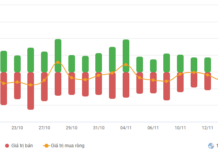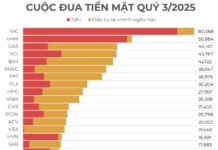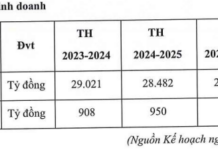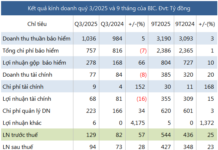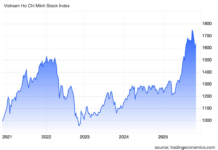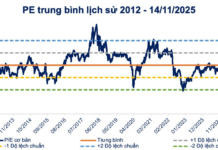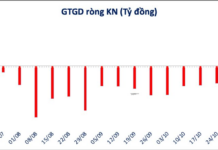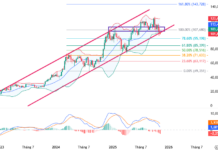The market witnessed a significant decline in buying power, leading to a severe weakening of demand. Meanwhile, profit-taking activities increased, putting pressure on almost all stocks. The VN-Index closed the morning session with a loss of 5 points (-0.39%), with the number of declining stocks tripling the number of advancing stocks.
The matched order value on the HoSE decreased by 20% compared to yesterday morning, reaching just over 5,408 billion VND. The amount of money flowing into the VN30 basket decreased even further, by 30%, to just over 2,312 billion VND. Such weak buying power inevitably leads to thin support orders.
The market did not show immediate signs of weakness initially. At 9:32 am, the VN-Index reached its highest point, with a gain of nearly 3.5 points above the reference price. The breadth at this peak was also favorable, with 157 stocks advancing and 139 declining. However, by the second peak at 10:35 am, although the index remained above the reference price, the breadth had narrowed to 126 advancing stocks and 215 declining stocks. It became evident that the VN-Index was being propped up by a few large-cap stocks, while others had already started to adjust.
The VN30-Index is currently down 0.47%, with 6 advancing stocks and 20 declining ones. Many blue-chip stocks are closing at their lowest levels, such as CTG, MWG, SHB, SSI, VHM, and VPB, despite the relatively small losses compared to the reference price. Numerous other stocks closed near their lowest prices, only slightly higher due to a few small buy orders at the end. The 30% decline in the VN30 basket’s liquidity confirms the continued outflow of money from this group. BVH, BCM, VNM, VIB, VIC, and GAS are the few representatives that remain in positive territory, but their gains are minimal.
The VN-Index lacks a leading sector, particularly with the banking sector undergoing adjustments. BAB and VIB are among the 27 stocks that are still in the green. Similar trends are observed in other sectors, and stocks that have not fallen below the reference price are showing signs of weakness. For instance, BVH fell by 1.63% from its intraday high, VIC dropped by approximately 0.83%, VNM declined by 1.32%, and GAS slipped by 0.94%. Among the top 10 stocks by market capitalization, we see VHM decreasing by 1.13%, HPG falling by 1.17%, and FPT dropping by 0.9%.

With such a narrow breadth, the mid- and small-cap stocks also faced significant pressure. This sector had already been experiencing profit-taking activities in the previous days, and as the VN-Index turned downward, selling pressure increased. While the mid- and small-cap indices have only witnessed minor declines so far, with Midcap down 0.77% and Smallcap down 0.69%, the HoSE floor currently has 108 stocks falling by more than 1%, and this group accounts for nearly 35% of the floor’s total matched value. In addition to blue-chip stocks like HPG, VHM, and MWG, we also see significant declines in stocks like VIX, which fell by 2.06% with a matched value of 110.2 billion VND, NVL decreasing by 1.55% with a matched value of 102.7 billion, AAA dropping by 3.29% with a matched value of 101.3 billion, and PNJ falling by 1.37% with a matched value of 64.8 billion. Stocks with smaller liquidity have witnessed even deeper declines, such as APH falling by 6.59%, RDP decreasing by 5.44%, NHH dropping by 4.65%, SMC by 3.1%, SCR by 2.34%, and HHS by 2.32%…
There aren’t many notable stocks among those moving against the broader market trend. Given the overall weak buying power, it is challenging for large-cap, highly liquid stocks to find support. The majority of advancing stocks have small liquidity. Notable gainers include EVG, up 6.9%, SGR, up 5.38%, CCL, up 3.3%, HCD, up 2.94%, VHC, up 2.37%, ANV, up 1.69%, PC1, up 1.37%, and TNH, up 1.05%.
Dragon Capital Chairman: “Long-term vision is needed, accepting necessary adjustments for a safer, more efficient, and higher quality market”
According to Mr. Dominic Scriven, Chairman of Dragon Capital, the role of the finance industry in the stock market will be significant in 2023 and possibly in 2024. The roles of other industries, such as real estate or consumer goods, will depend on their respective challenges.





